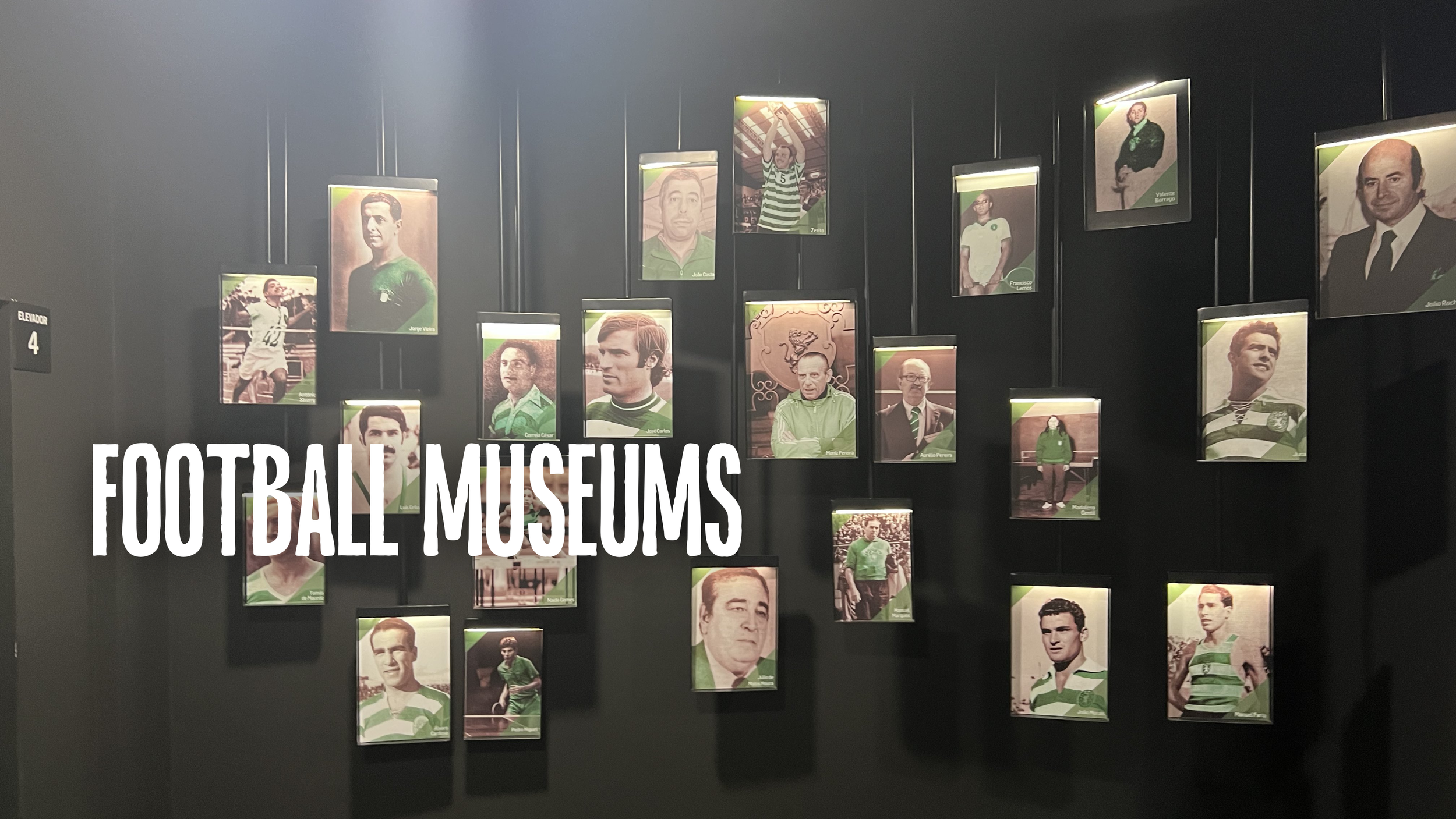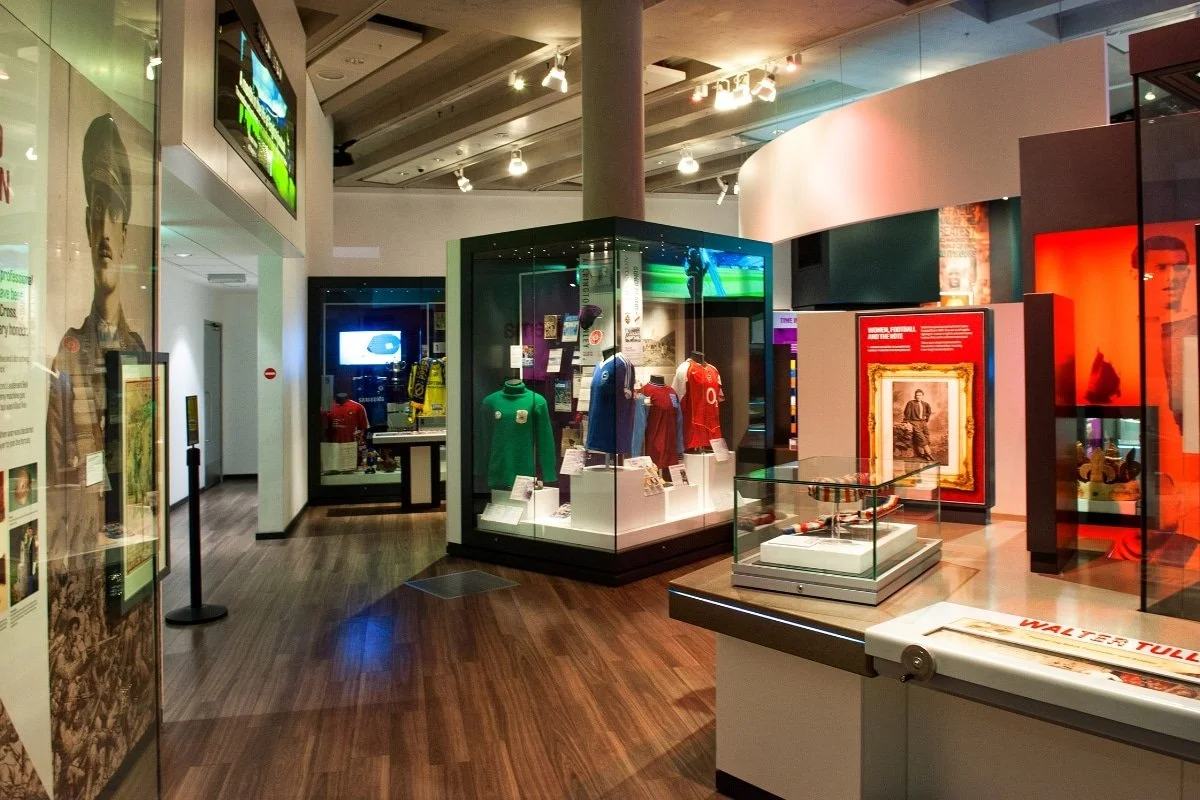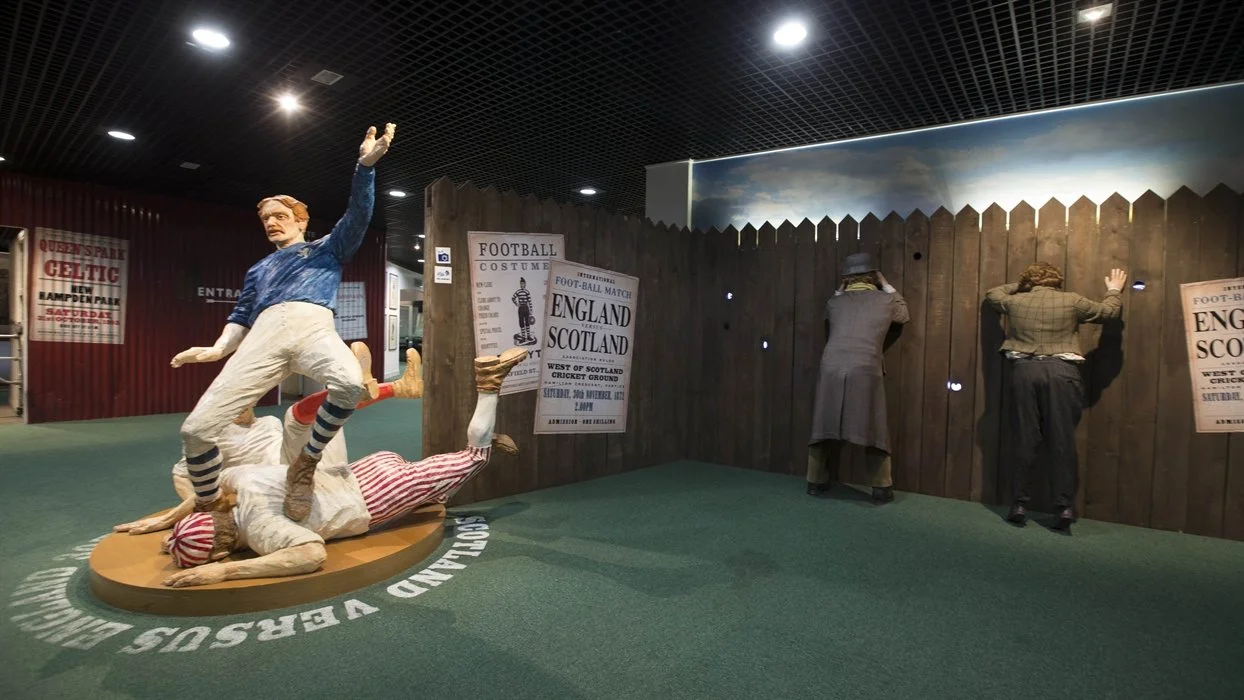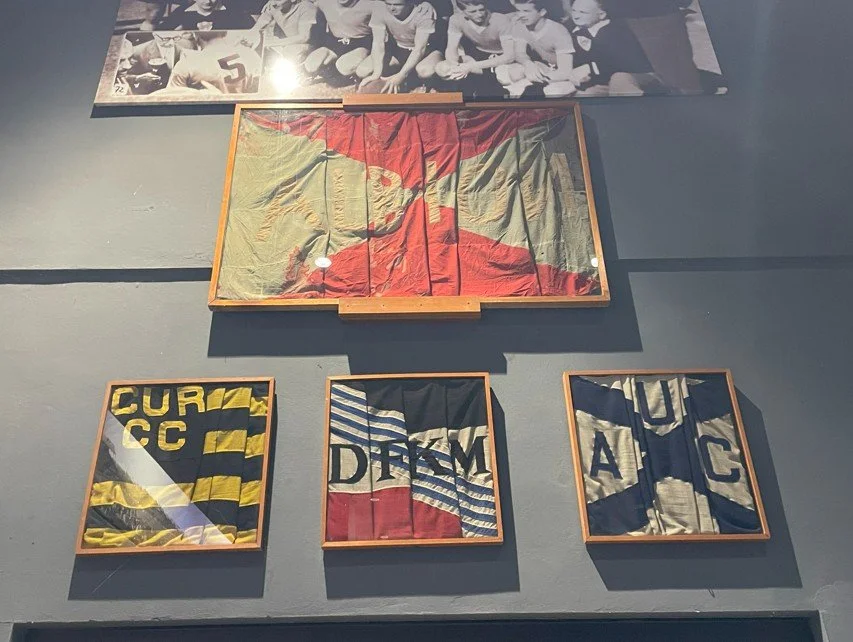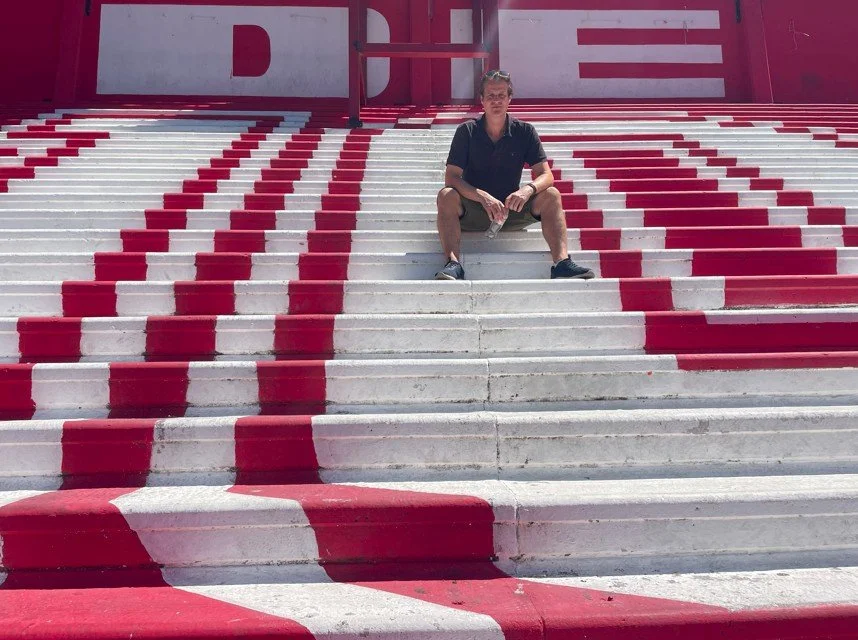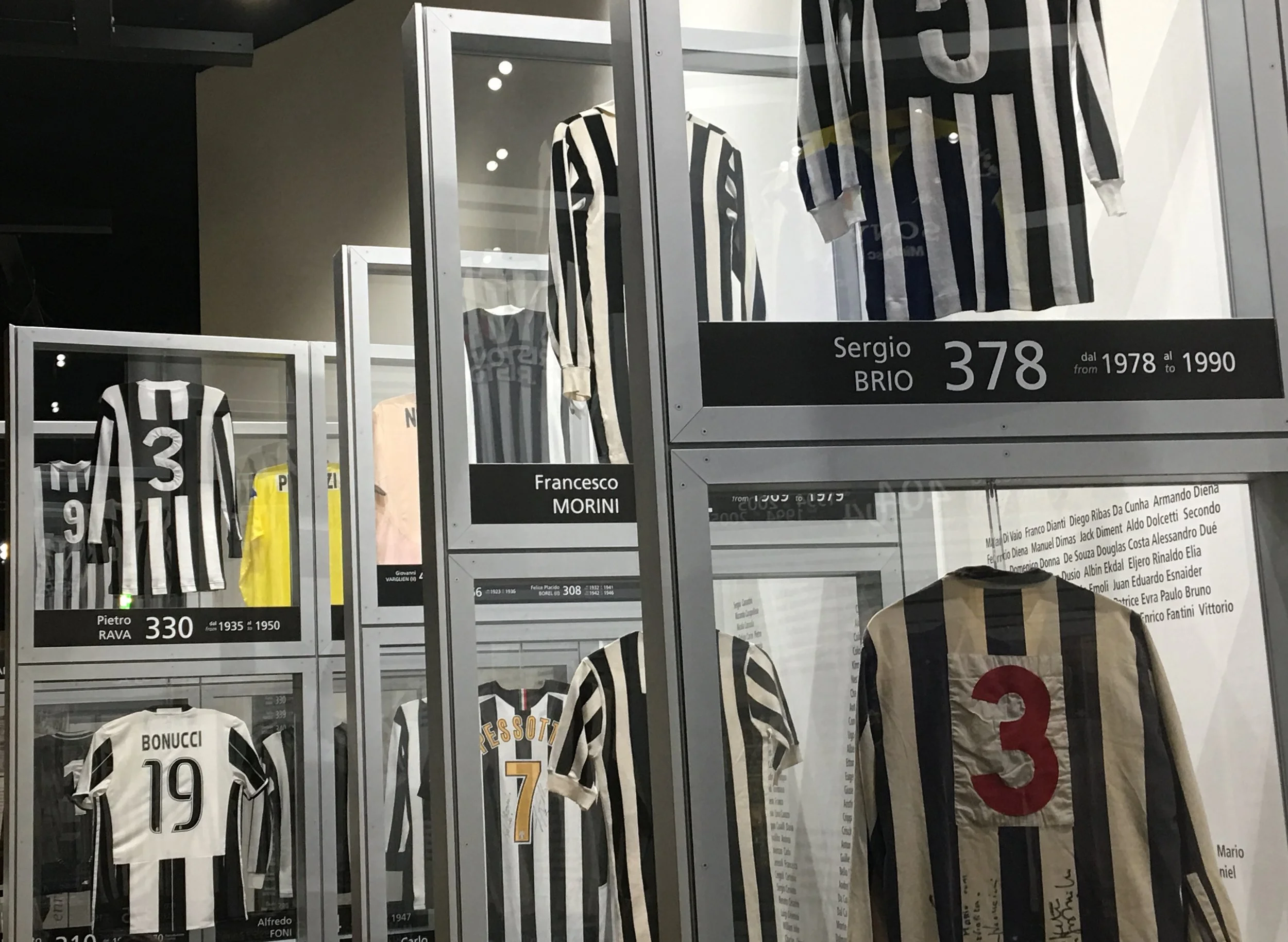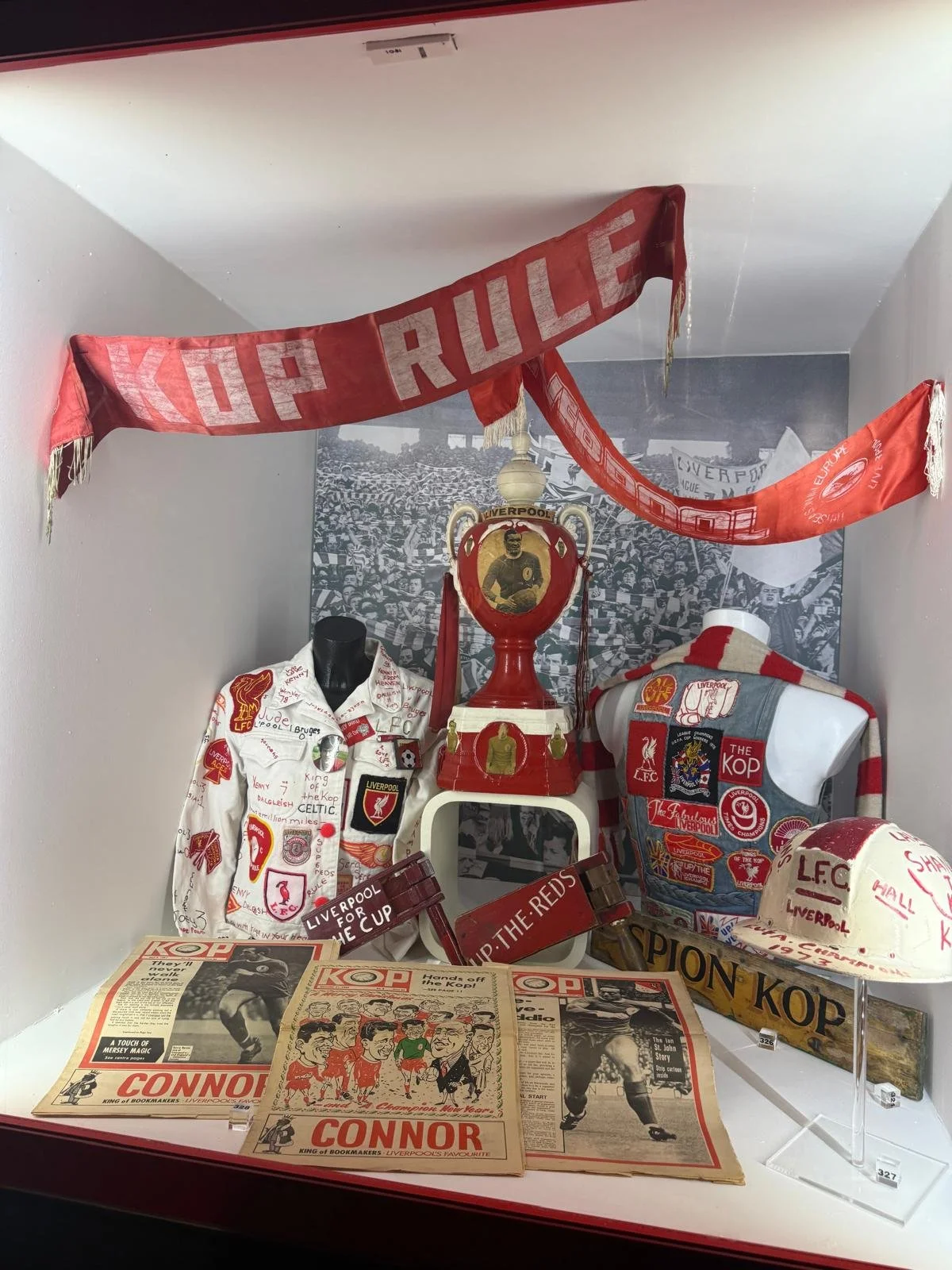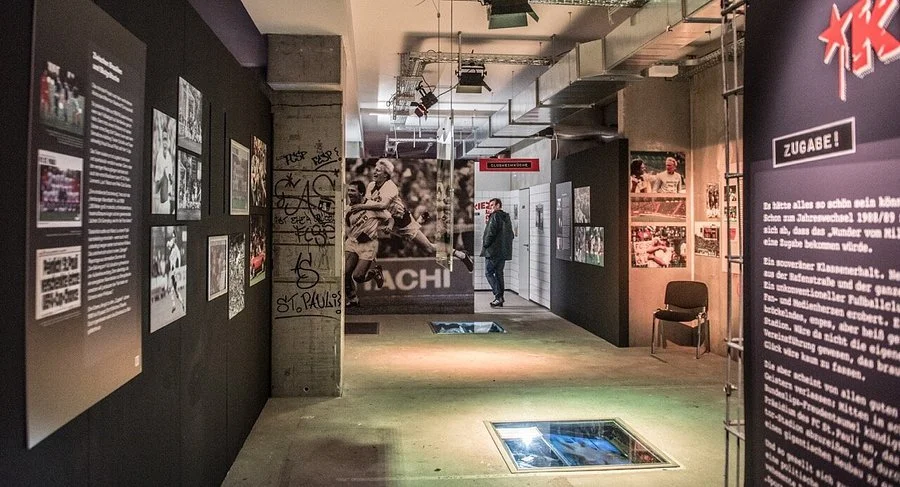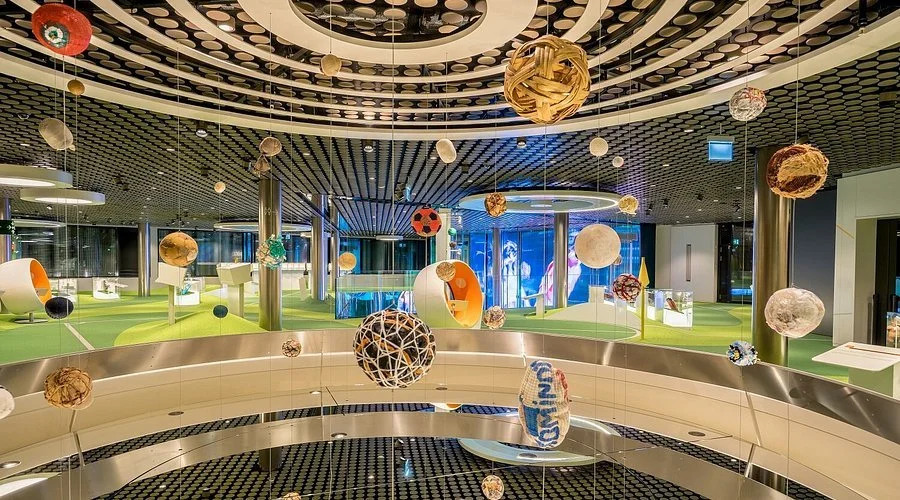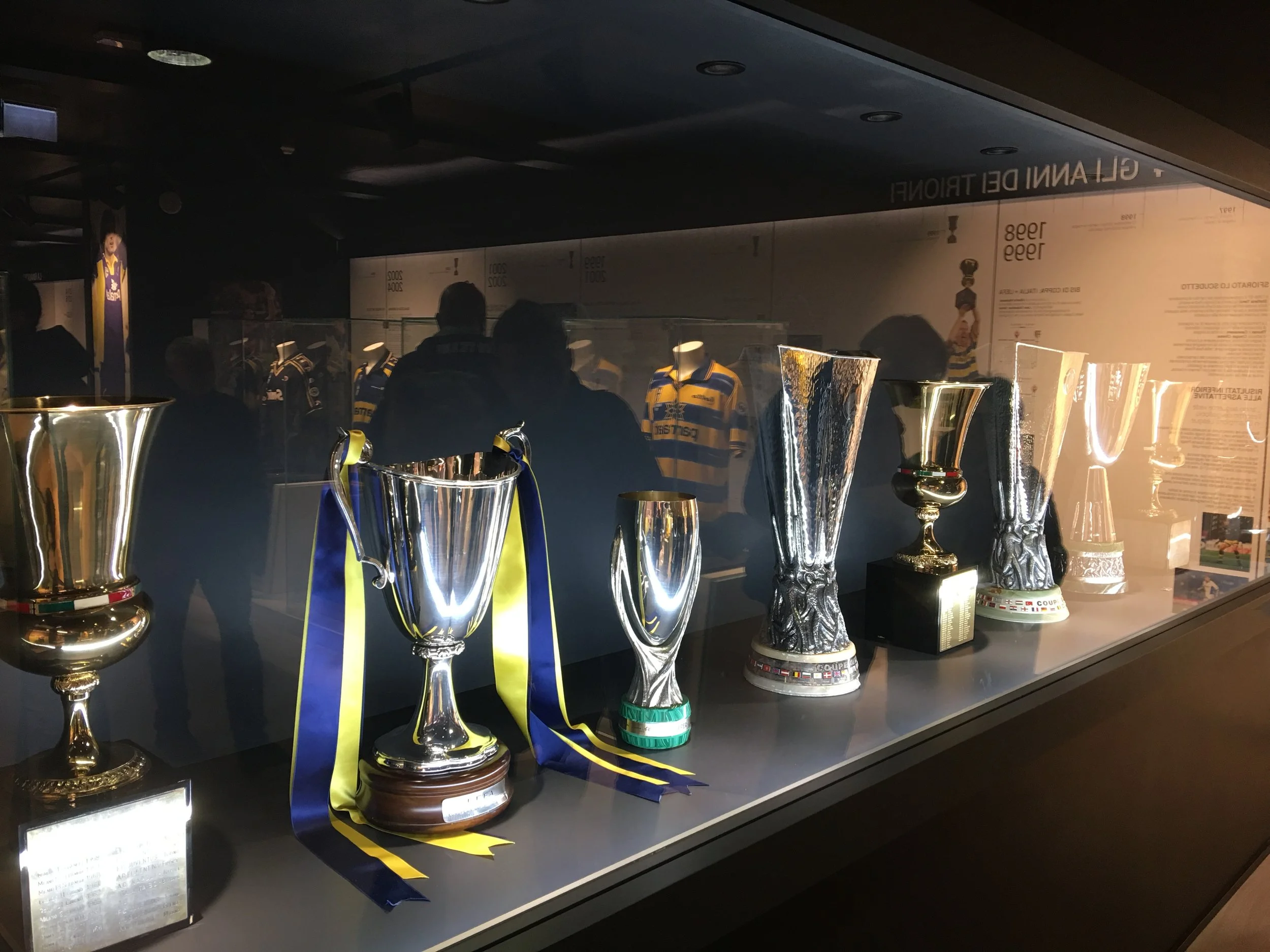Words: Chris Lee // @OutsideWrite
As a football historian, few things frustrate me more than a club or stadium without a museum or, quite inexcusably, even a history page on their website. I think you can learn a lot about a club or nation by the way it marks its history. I’ve been to many museums around the world covering all manner of sports (shout out to Fenway Park in Boston and Melbourne Cricket Ground), and here I want to celebrate the best traits, plus some of my favourite football museums.
When I was researching my first book, Origin Stories: The Pioneers Who Took Football to the World, you would not believe how frustrating it was when a club with a really fascinating back story just did not seem to celebrate it, either online or with a museum. It’s not even a case of resources; some of the smallest clubs manage to honour their past in whichever way they can, sometimes even putting their nations’ top clubs to shame.
For example, Sligo Rovers (Ireland) and Corinthian-Casuals (England) have ‘walking museums’; a wall of interesting articles and photos that fans can read pre-match or at half-time. At the same time, mid-sized clubs like Quilmes in Argentina, or Parma and Perugia in Italy have modest one-room museums (see below).
I think a football museum should include easy-to-consume information in the local language and in English for an international audience. I prefer it to be in chronological order, with a dedicated trophy room. River Plate’s museum is great from a flow point of view – you follow a tunnel with a room dedicated to each of its decades - although the stadium tour when I went was limited due to building work. I also think museums should feature an engaging, tactile element, and include lots of football shirts!
Here are ten great football museums and stadium tours worth visiting if you’re in the area - in my opinion, of course.
National Football Museum | Manchester, England
Given Manchester is the home of two of England’s most popular clubs and the birthplace of the Football League, it makes sense that the National Football Museum is here, a short walk from the city centre. Given the sheer amount of football history – especially in the north of England (the museum used to be in Preston) – there is an incredible amount of memorabilia in the museum, all told in an easy chronological order. There’s a conscious effort to promote the women’s game too.
The National Football Museum in Manchester.
Photo Credit: WikiMedia Commons
Scottish Football Museum | Glasgow, Scotland
In the bowels of Hampden Park, you’ll find the Scottish Football Museum and its huge archive. There are some unique objects here, including the world’s oldest surviving major Association football trophy, the Scottish Cup (the older original English FA Cup was stolen) and artefacts from the first international in 1872. If you fancy it, you can recreate Archie Gemmill’s famous goal against the Dutch at the 1978 World Cup.
The Scottish Football Museum at Hampden Park.
Photo Credit: VisitScotland
Museo Centenario | Montevideo, Uruguay
Football’s first global superpower was Uruguay. Winning the Olympic football gold twice in the 1920s not only put this tiny nation of just over two million people at the time on the map but also earned it the right to host the first FIFA World Cup in 1930. Uruguay won that too and repeated the trick when it next appeared at a World Cup in Brazil in 1950.
Uruguay has been the champion of its continent since then, but never since hit the same global heights. The country does a great job of celebrating its golden age within the grounds of the Estadio Centenario, built for that first World Cup. While you’re in Montevideo, it’s worth checking out the Gran Parque Central tour (home of Nacional), too.
Flags of Uruguay’s four oldest clubs at the Centenario Museum.
Photo Credit: Chris Lee
There are bigger clubs in Buenos Aires, and River Plate and Boca Juniors’ museums and stadium tours draw in the pundits and don’t disappoint. However, if you’re willing to catch the train or cab out to La Paternal, you’re in for a treat. Argentinos Juniors discovered and nurtured Diego Armando Maradona. There’s plenty of Maradona memorabilia and murals at the stadium that now bears his name, but there is much more to the museum than that.
A knowledgeable and attentive guide takes you through the club’s history, its kits, its successes, and you really do access all areas, including a shrine to ‘El Diego’ that has sprung up. Argentinos Juniors even offer a tour and matchday ticket combo for overseas visitors.
While in the area, be sure to walk a few blocks to Diego’s old family home, now Casa D10S (‘House of God’ with Diego’s no.10 replacing ‘io’).
Argentinos Juniors | Buenos Aires, Argentina
The author taking part in Argentinos Juniors’ stadium tour.
Photo Credit: Chris Lee
Out of the elite clubs, I have to say Juventus do a great job. There’s a separate room with the La Vecchia Signora’s many, many items of silverware while the museum focusses on a chronological journey of the club’s rich history, celebrating its players and its kits.
Juventus | Turin, Italy
The shirts of former players on display at Juventus’ museum.
Photo Credit: Chris Lee
Liverpool knows how to honour its remarkable history. There are murals on surrounding end-of-terrace walls; busts in the vicinity to club icons like founder John Houlding, and Messrs Shankly and Paisley; and the memorial to the 97 victims of the Hillsborough tragedy.
Inside, you get great access to the stands, a chance to walk through the famous ‘This is Anfield’ tunnel, and there’s an extensive museum with plenty of memorabilia. It’s little surprise that it’s a very popular tour.
Given their proximity across Stanley Park, I did both the Anfield and Goodison tours on the same afternoon. Goodison Park has since been vacated by Everton’s men’s team and taken up by the women’s side, but it looks like Everton will keep running the Goodison Park tour.
Anfield Stadium Tour | Liverpool, England
Supporters’ memorabilia exhibition at Liverpool’s museum.
Photo Credit: Rory Bryce
The museum at Windsor Park is called the Education and Heritage Centre at the National Football Stadium run by Irish FA Tours. They are knowledgeable volunteers who walk guests through a thoroughly engaging history of football in the north of Ireland. There are homages to the great players (Best, Blanchflower et al), some great retro shirts, a celebration of the Ulsterman who invented the penalty kick (and you can take on a computerised Pat Jennings, if you wish), the British Home Championship Trophy – the world’s oldest international tournament – and much more.
While you’re in the area, it’s worth contacting the Belfast Celtic Society ahead to see if their museum is open. I visited both while researching my book, Shades of Green: A Journey into Irish Football. Meanwhile, in the Republic of Ireland, while there is no soccer museum in Dublin, you can do The Football Walking Tour of Dublin, which is a unique experience.
Irish FA Tours | Belfast, Northern Ireland
The tunnel at Windsor Park, Belfast.
Photo Credit: Chris Lee
FC St Pauli | Hamburg, Germany
FC St Pauli is famous for having arguably the original left-wing activist football fanbase in modern football and have inspired many others around the globe. Its stadium is as on-brand as you would expect, and the tour takes you from its roots in Hamburg’s Heiligengeistfeld (Holy Spirit Field) off the notorious red-light Reeperbahn district, through the stands, into the club’s changing rooms, ghost train-esque player tunnel, and quirky executive boxes.
Inside the St Pauli museum.
Photo Credit: TripAdvisor
FIFA Museum | Zurich, Switzerland
FIFA has a great collection of memorabilia, and the museum majors on FIFA’s World Cup tournaments and the entry level floor was dedicated to the Club World Cup when I visited. There’s a nice chronology of how the game got started and spread around the world.
The ‘Galaxy of Balls’ display at the FIFA Museum in Zurich.
Photo Credit: ZurichTourism
Parma Calcio 1913 | Parma, Italy
Parma’s one-room museum at the Stadio Ennio Tardini is slick and covers way more than just its trophy-laden 12-year period between 1990-2002. There are old shirts and plenty of interpretation boards. It’s a wonderful place to spend a few minutes before kickoff. However, the Tardini is due a facelift, so I am not sure what the future will bring. I hope it is maintained.
Parma’s trophy cabinet.
Photo Credit: Chris Lee
Honourable Mentions
Hamburger SV’s museum at the Volksparkstadion is great value at just €6 (€12 for museum and tour), but is a long way out of the city centre.
Peñarol’s museum is fairly central in Montevideo and good value on a Sunday. There’s a street market right next to it, so worth doing both at the same time.
Valencia’s Mestalla tour is worth doing before the club finally completes its move to Nou Mestalla.
Chris Lee is the founder and editor of the football history, travel and culture blog and podcast, Outside Write. He is the author of three football books.


